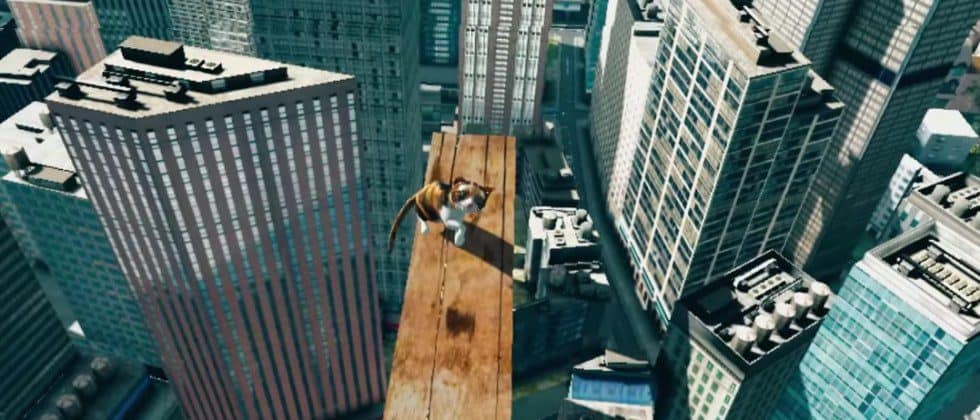
Want to save a kitten and confront your fears in VR? Namco Bandai’s virtual reality space will let you do just that.
VR Zone Project i Can is a temporary virtual reality installation in Tokyo, an arcade that mirrors the much more complex facility developed by The Void in Utah.
One of the experiences is set inside a virtual skyscraper with a kitten sitting at the end of wooden plank, 60 stories above the ground. Your goal is to safely rescue it. Are you brave enough?
If you’re terrified of heights get ready, gulp . . . , to face them head-on.
The video is not the best, but you’ll get the idea:
https://www.youtube.com/watch?v=9jx2YWzxvbs
Virtual Reality Research
Namco Bandai will open its virtual reality space on April 15th for six months. It’s a 5,870 square foot arcade that will use HTC Vive headsets. You can see Google’s english translation of the Project I-Can website for more details (and have a few laughs at how VR experiences get translated into english).
According to IBTimes,
The VR Zone will also function as a research facility and the company would seek feedback from users on the VR experience to use in future projects. Bandai Namco will offer six different games for people to try including Ski Rodeo, Real Drive, Escape Ward Omega, Train Meister and Argyle Shift. One game in particular – the Fear Of Heights Show – is terrifying and involves rescuing a cat on a wooden plank 60 stories above the ground.
VR, Entertainment and Therapy
A mobile and home video game company, Namco Bandai will use the arcade for virtual reality research. And it will be interesting to see the results.
Will users opt for the more traditional gaming experiences of Real Drive (a driving simulator) or Ski Rodeo (downhill skiing simulator)? Or will they go for the Fear of Heights experience, using VR not only as entertainment but as a way of confronting their vertigo?
We know that virtual reality has tremendous potential for therapy and behavior change – look at the current VR experiments in dealing with combat-related PTSD.
The Bravemind VR Exposure Therapy Software developed by the University of Southern California’s Institute for Creative is already in use at 60 locations. Trained therapists guide ex-service members through controlled VR simulations to address their fears. And as USC notes, a generation that grew up on video games may be more receptive to VR-based treatments than traditional “talk-therapy”.
But what happens if people begin to use a medium that incorporates both entertainment and the potential for therapy and behavior change? Therapists might look aghast if we begin to confront our fears in simulation arcades instead of professional settings. That doesn’t mean therapists will go the way of news reporters and taxi drivers. But as virtual reality spreads, don’t be surprised to see a debate over professional versus amatuer self-therapy solutions offered through VR.
Over a century ago, the “talking-cure” (thanks to Joseph Breuer and Bertha Pappenheim) stood as the basis of the then novel field of psychoanalysis. Virtual reality may actually give us something completely different – the experience cure.
How we use it – and its ultimate value – is something else that VR will force us to confront.
Emory Craig is a writer, speaker, and consultant specializing in virtual reality (VR) and generative AI. With a rich background in art, new media, and higher education, he is a sought-after speaker at international conferences. Emory shares unique insights on innovation and collaborates with universities, nonprofits, businesses, and international organizations to develop transformative initiatives in XR, GenAI, and digital ethics. Passionate about harnessing the potential of cutting-edge technologies, he explores the ethical ramifications of blending the real with the virtual, sparking meaningful conversations about the future of human experience in an increasingly interconnected world.

